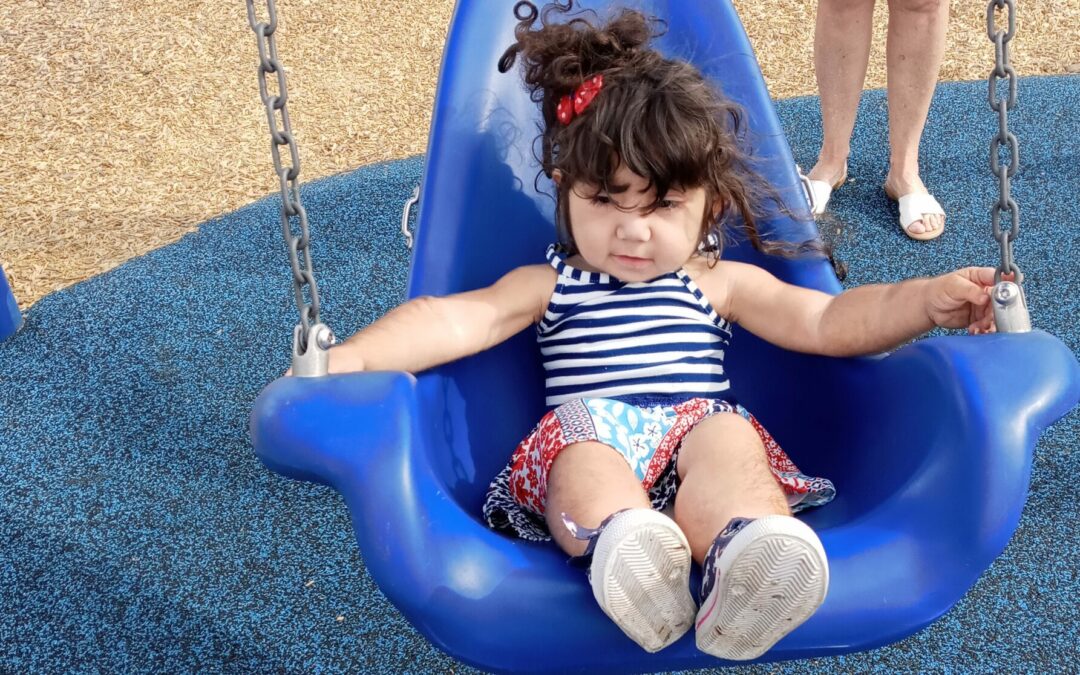Everyone knows about the 5 senses: Taste, Touch, Sight, Smell, and Hearing. However, we actually have more than 5 senses. We also have proprioception, vestibular, and interoception senses. Proprioception is the body’s sense of movement, it tells your brain what part of your body is moving, how its moving, and where it’s moving. Your vestibular system is located in your ears and it gives you information on the quality of our movements in respect to our center of balance, it creates orientation for our body in space as a whole. Interoception is the sensation of what’s going on inside your body, it tells our brain if we feel hot, cold, hungry, nauseous, if we have to go to the bathroom, etc. Our brain interprets these sensations to create our reality, making sense of these sensation every second of every day and allowing us to navigate the world. If our brain has trouble interpreting or processing all these sensations it can result in something called Sensory Processing Disorder (SPD). Those diagnosed with SPD have difficulty processing all the different incoming sensory information. Like a traffic jam in the brain, some sensations will come through strong, some information may be stuck or try to “drive” in wrong lane. This “traffic jam” in the brain can make it difficult for a person to understand their body and what is going on in the world around them, interfering with their ability to interact with the rest of the world in various ways.
Everyone has their own internal perception of the sensory information their brain receives. Some people greatly enjoy sitting on a swing, feeling the texture of wet sand, or wearing a soft pair of slippers, while others may avoid these things as their brain does not interpret those sensations as good or enjoyable. Some people are easily startled by loud noises while others may have difficulty looking at bright and frequently changing lights. Everyone processes sensations differently which will affect their interpretations of situations and their everyday interactions. Intermittent difficulties with processing are not uncommon and don’t indicate sensory processing disorder. When an individual’s sensory processing abilities start to interfere with their daily life it is a good indicator they may benefit from further medical evaluation to determine if they have SPD. The signs of SPD or just difficulty processing sensory information may not be obvious and can be commonly attributed to behavioral problems or ADHD. Below are some common signs of sensory processing disorder. If any of these signs/symptoms are similar to what you are experiencing with your child we advise you to bring them up to your pediatrician for further evaluation.
Signs and Symptoms to look out for:
- Hyper- or hyposensitivity to everyday sensations: ex) becoming extremely distressed if their clothes are wet, decreased awareness when they are injured or minimal response to pain, unable to cope with every day loud noises, or unable to tolerate the feeling of tags in their clothes.
- Sensory seeking behavior ex) constantly moving, unable to sit still and focus, and/or constantly running/crashing into things without it appearing to be an accident.
- Dramatic mood swings or disproportional emotional responses to what appears to be inconsequential triggers: ex) they touch a sticky surface and can’t focus on anything else until their hands are clean, they will only wear specific pair(s) of shoes and will refuse to walk, wear, or play in the “wrong pair,” gagging in response to everyday foods, and/or they having a meltdown when they are startled by a loud noise such as a truck or the vacuum cleaner.
- Difficulty potty training: not seeming to understand if they have to go to the bathroom or when their diaper/pullup may need a change (past the expected potty-training age).
- Confusing understanding of touch: may think light touch feels painful or they seek crushing pressure for reassurance, i.e. very strong hug to the point of your idea of discomfort.
- Easily overwhelmed in bright or loud environments resulting in the child having a meltdown or becoming withdrawn
- Slow or minimal reflex responses to loss of balance, hot surfaces, extreme cold, or sudden movements
- Lack of personal space or personal hygiene awareness.
- Difficulty focusing in class but knows material well when they are 1-1 or at home in their comfort zone.
These are just some signs of sensory processing disorder. These signs could also indicate other potential underlying causes as SPD has overlapping symptomology with other diagnoses. If you are reading this article and you feel some of these symptoms fit your child, talk to your pediatrician. Sensory processing disorder can be successfully managed with various therapies. The goal Is always to help your child reach their full potential and give them the tools they need to be successful on their own terms.
If your kiddo has been diagnosed with SPD, is struggling to cope with any of the symptoms listed above, or if you have any other questions about how to support your kiddo’s growth and development reach out for an evaluation. Our therapists at Kid Physical have over 34 combined years experience offering specialized, holistic healthcare for children of all ages. Our top priority is providing support for both caregivers and children so that they can reach their highest potential.
Written by Meghan Patton PT, DPT

